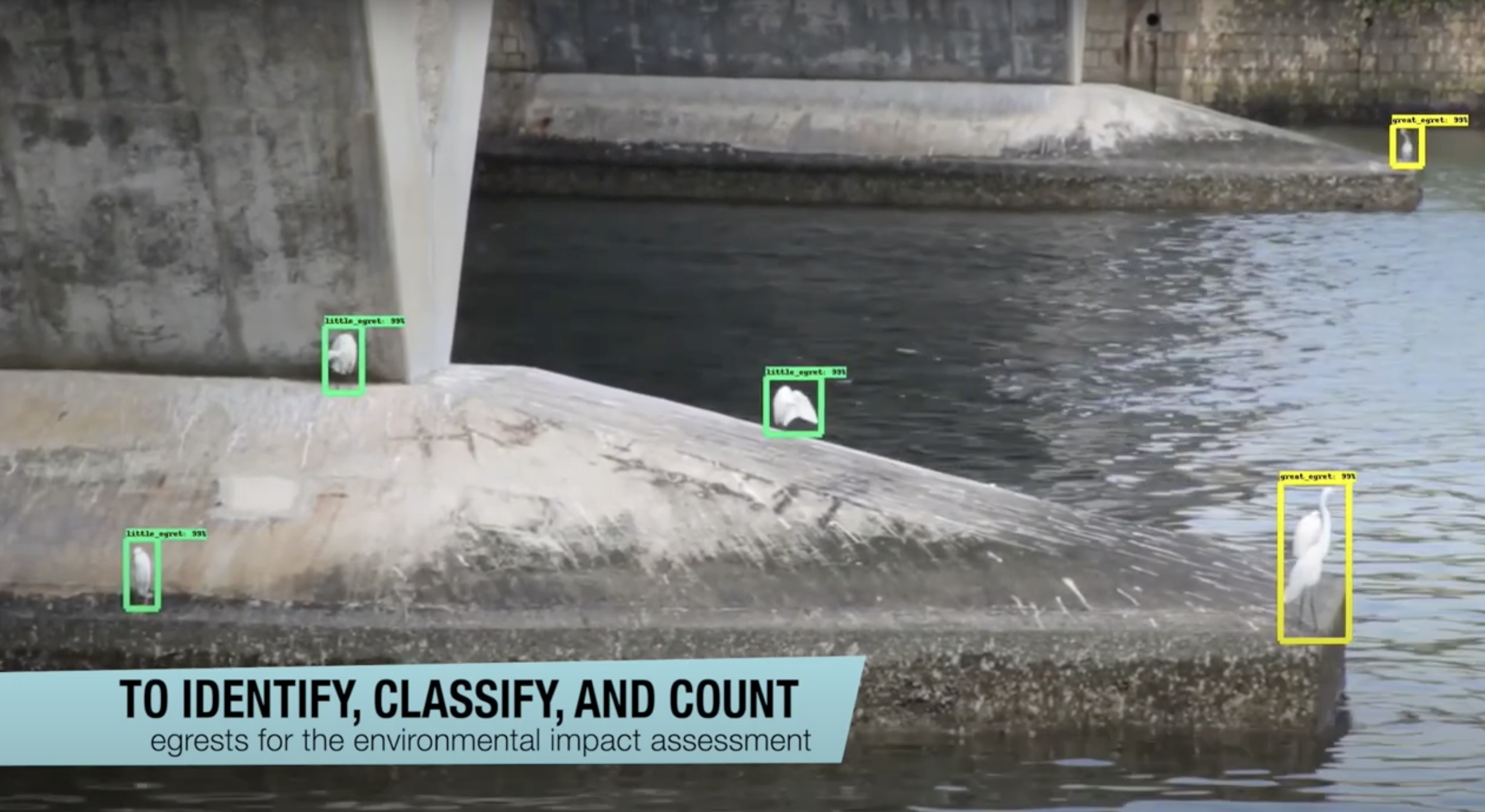Landscape and Biodiversity
As part of the University 2028 Sustainability’s challenges, HKUST aims to utilize the campus landscape as an active resource for research, sustainability experimentation, and community engagement.
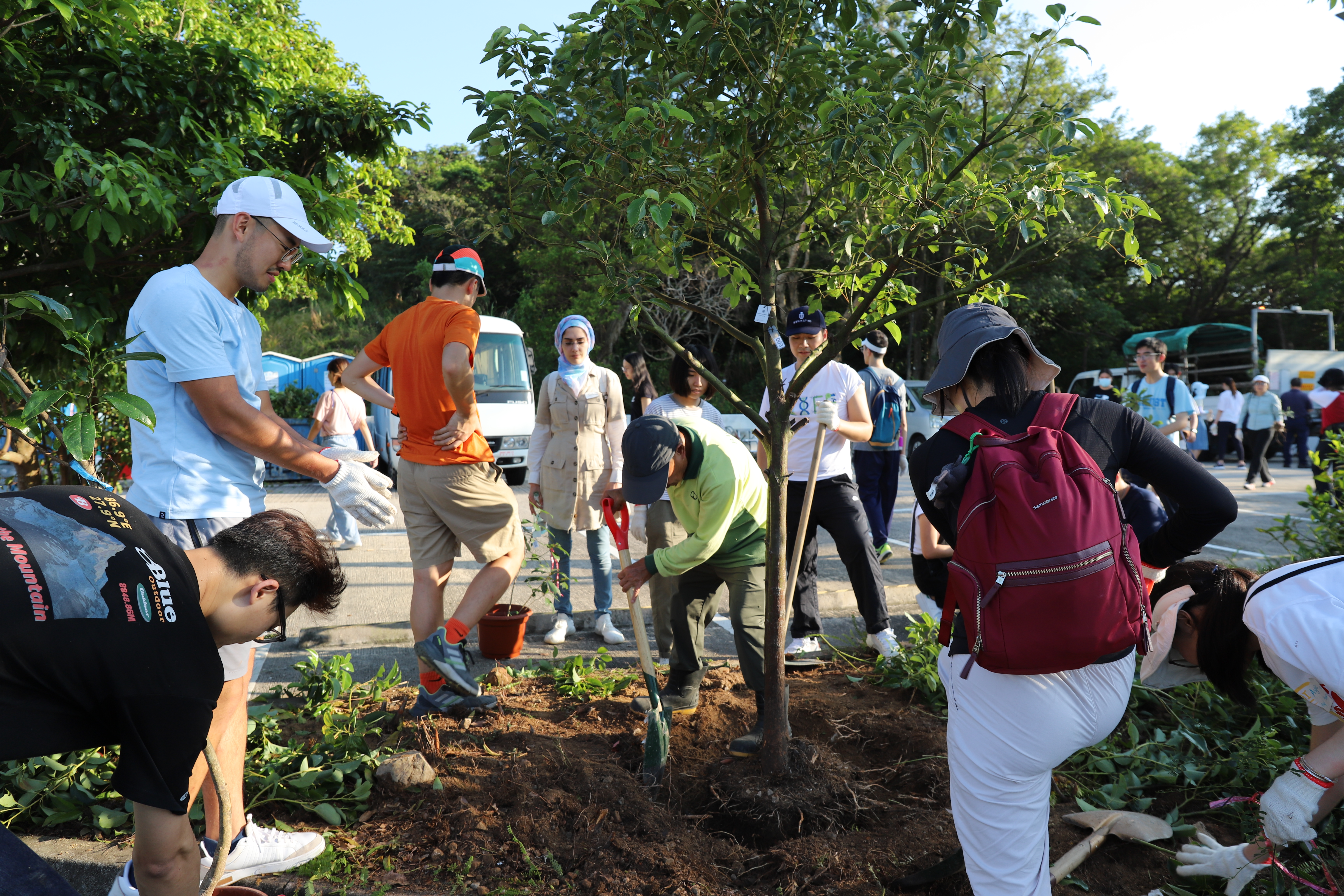
Category |
2022-23 Tactic |
2022-23 Progress & Key Activities |
|
Healthy Soil |
Allocate spaces on campus for utilizing “green” landscape wastes and storage of site-developed compost. |
New space allocation of shredded leaves storage in LG7 Nursery in addition to the recycling skip in One University Road Nursery for landscape wastes. |
|
Prioritize the use of compost in flower beds as a way to provide natural nutrients to a groundcover that can retain moisture. |
Use of wood chips and on-campus mulched leaves on exposed soil to retain moisture and natural nutrients. |
|
|
Experiment with “compost tea” as a way to add natural nutrients to the turf and grassy areas. |
Testing and discussions underway |
|
|
Engagement and Research |
Collect flora and fauna information from SSC projects to build a public and visible inventory of the natural capital of the campus. |
Developed the HKUST Biodiversity Map showcasing the biodiversity of the campus. |
|
Add specific landscape areas and features in the campus tours for incoming students and visitors. |
Planting of orchids in North Entrance and SSQ BBQ site to enrich landscape features. |
|
|
Engagement with contractor to ensure meeting all performance goals to reach incentive benchmark. |
Regular and active engagement of contractor through bi-monthly Biodiversity Steering Committee Meeting. |
- Governing Biodiversity: The Biodiversity Steering Committee meets bi-monthly to review landscaping operations and discuss sustainable landscaping practices. Their main objective is to enhance biodiversity within the campus environment at HKUST.
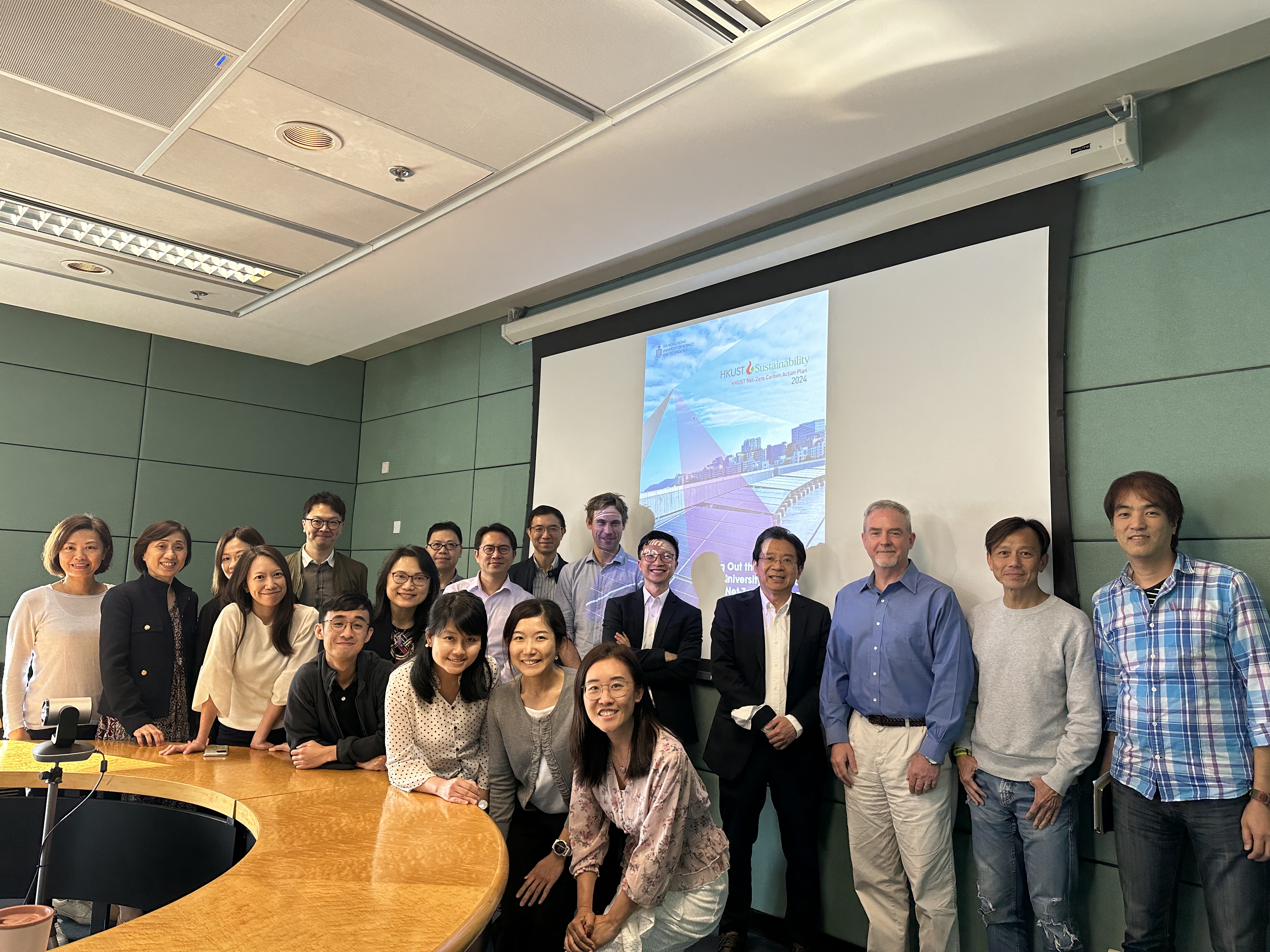
- Conserving the Ecosystems: In the Net-Zero Building Standards (refer to section 4.6.8), design team is responsible for demonstrating methods on enhancing the ecological value of the site, while identifying ways to conserve the existing land ecosystems sustainably, especially the trees on the existing site which can be a forest in the context of HKUST.
- Conserving Timber Resources: In the Tree Planting & Felling Policy (refer to section Tree Felling Guidelines), design team is also required to fell the trees in a manner that the timber resources in the ecosystem can be utilized sustainably.
- Identifying, Monitoring and Protecting Biodiversity: In the Net-Zero Building Standards (refer to section 4.6.8), for plants on existing sites, the design team have to identify, monitor and protect plant species listed in the IUCN Red List, and other species with conservation value which are listed in Forestry Regulations Cap. 96A, and Protection of Endangered Species of Animals and Plants Ordinance Cap. 586 (Schedule1) to ensure their preservation and promote species recovery, particularly Diospyros vaccinioides.
Image
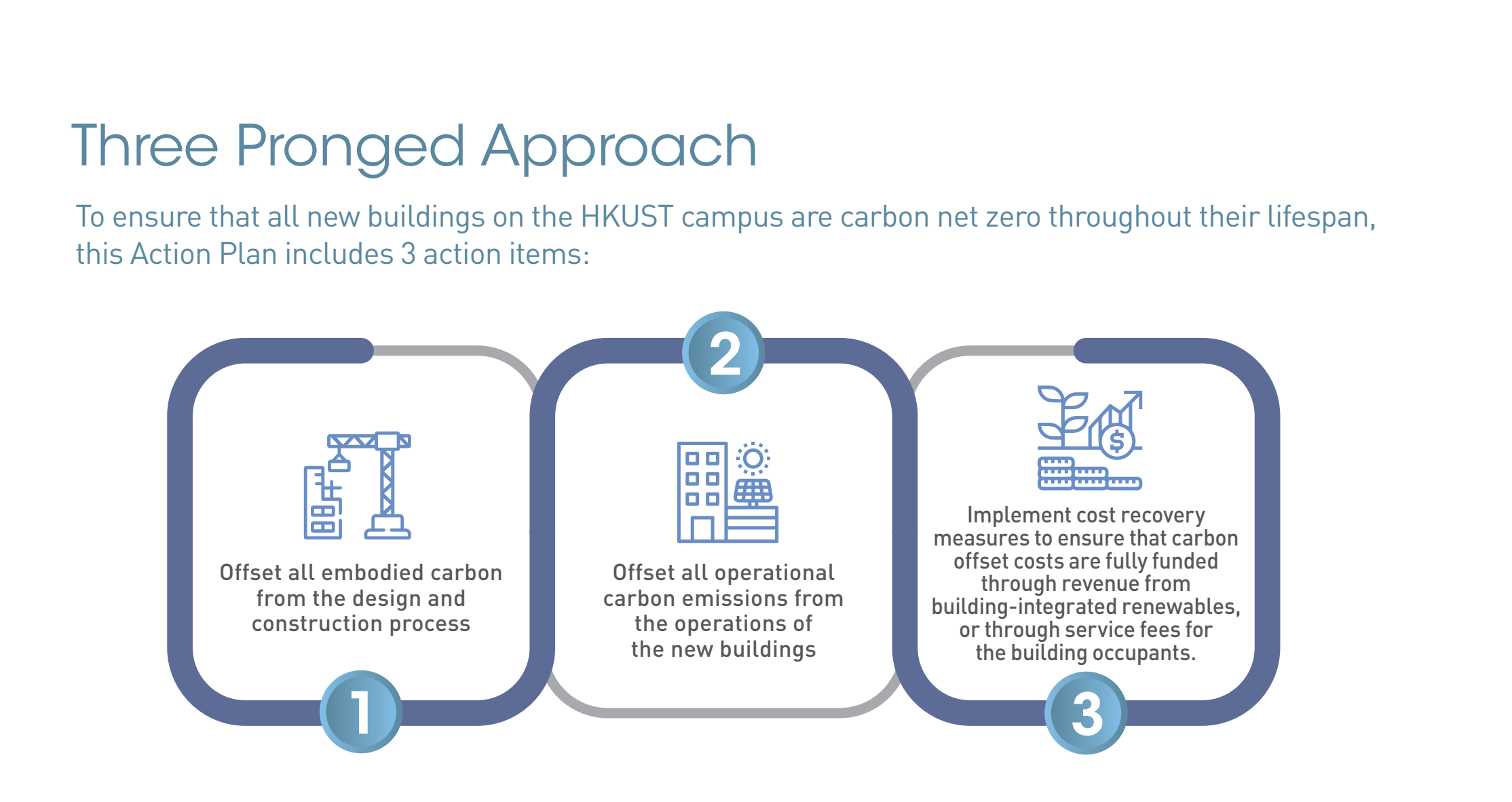
- Controlling the Impact of Alien Species: In the Net-Zero Building Standards (refer to section 4.6.8), design team have to control the impact of alien species, especially avoiding invasive ones, to prevent disruptions to ecosystems, maintain the natural balance.
- Policy to Reduce Plastic Waste in Offices: The HKUST Sustainable Office Standards & Guidelines include standards for purchasing in bulk to minimize the amount of plastic packaging (refer to section 3) and the preference for reusable cutlery, mugs, and tableware over plastic items (refer to section 6). These guidelines were initially adopted in 2016, with review and revisions made in 2023.
Image
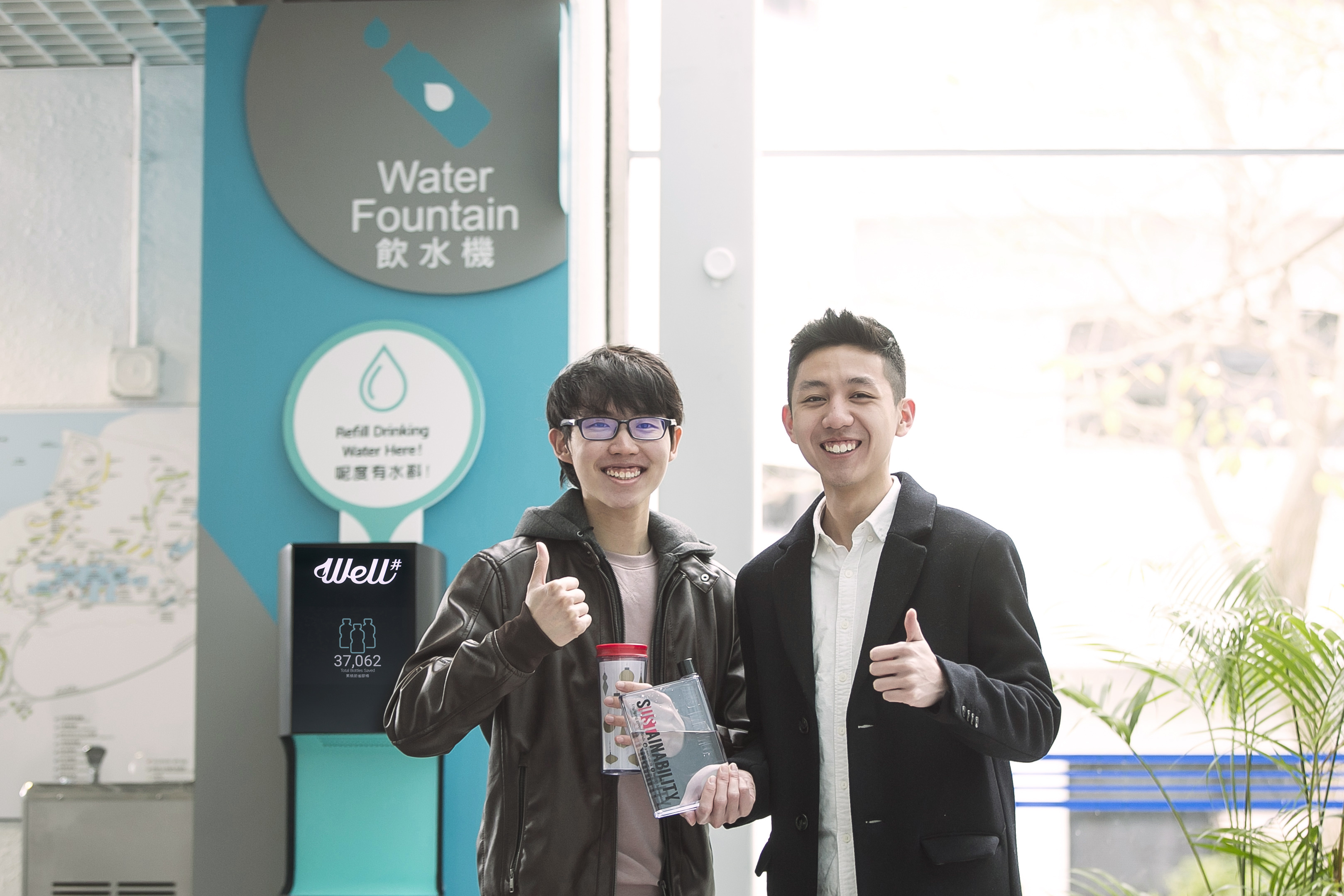
- Policy to Reduce Plastics in Catering: In addition, in the Sustainable Catering Policy caterers are required to take measures to minimize the use of disposable items, especially single-use plastics. Efforts should include discontinuing the provision of free disposable plastic items (e.g., straws, utensils) and implementing measures to reduce overall plastic packaging (refer to the page 1 of the Policy). This policy was adopted in 2016, with revisions accepted in 2018 and again reviewed and updated in 2023.
- Hazardous Waste Management and Disposal Policy: The chapter 16 of the HKUST Safety and Environmental Protection Manual contains the Hazardous Waste Management policy. The policy outlines the responsibilities of various stakeholders and is divided into Sections A and B. Section C covers the management planning of different types of hazardous wastes, such as chemical, biological, radiological, and others, and provides links to other relevant documents.
- Hazardous Waste Collection Service: The University also provided an operational webpage where users can request hazardous waste collection. It also provides detailed information about chemical waste management.
- Liquid Effluent Discharge Policy: The HKUST Safety and Environmental Protection Manual contains the liquid effluent discharge policy of the university, which can be found in Chapter 19 of the Protection Manual. It describes the overall requirements, the University’s compliance toward government standards, and our policies for handling effluent to protect the ecosystems.
- Maximizing Local Biodiversity in Development Plan: In the Net-Zero Building Standards (refer to section 4.6.8), the design team have to prioritize native species (more than 50%) in planting and landscaping to maximize the local biodiversity included in planning and development projects through enhancing ecological value of the landscape and providing habitat and food sources for local wildlife.
- Requirement for Development Projects: In the Net-Zero Building Standards (refer to section 4.6.8), design team for a development project demonstrates how to maintain and extend the ecological value and biodiversity of the site. Adopt measures such as use of surface water, native and edible planting, avoidance of polluting treatments and materials, avoid need for irrigation.
- Community Engagement in Protecting Shared Land Ecosystems: Through saplings transplanting and planting activities, the local community of HKUST are involved in the management of shared land ecosystems.
- Community Garden: The HKUST also collaborates with the students, faculty, staff, and resident community to manage a Community Garden together.
- Community Engagement in Managing Shared Land Ecosystems: In addition, the coastline of HKUST has always been a popular place for students' leisure activities, and it is also a habitat for numerous marine and shore animals. The Beach Cleanup @HKUST volunteer activity demonstrates that a group consisting of students, as well as families of faculties and staff, has collaborated to clean up the beach.
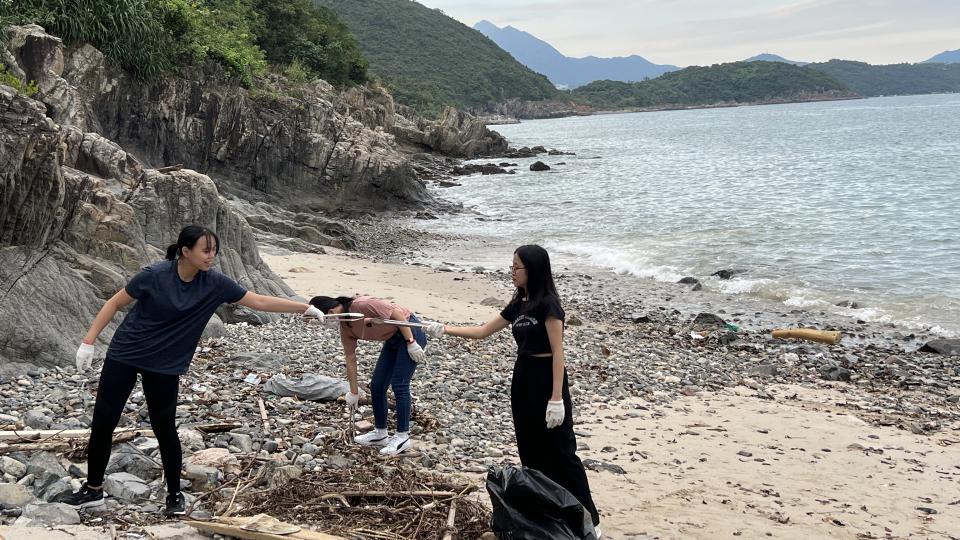
-
Community Garden: HKUST runs Community Garden programs since 2021 that enhances HKUST Community members knowledge on conserving and utilizing the wild land sustainably by providing them an opportunity to learn how to manage an organic garden. Around 600 hours of volunteering are recorded in the Community Garden.
- Sapling Transplanting and Planting Activities: From 2023 to 2024 the University has organized a sapling transplanting and sapling plantation volunteer activities, involving around 90 participants including faculty members, non-academic staff, students, and alumni. The activities include the transplantation of species of high conservation value which are native to Hong Kong, and some being listed in IUCN redlist.
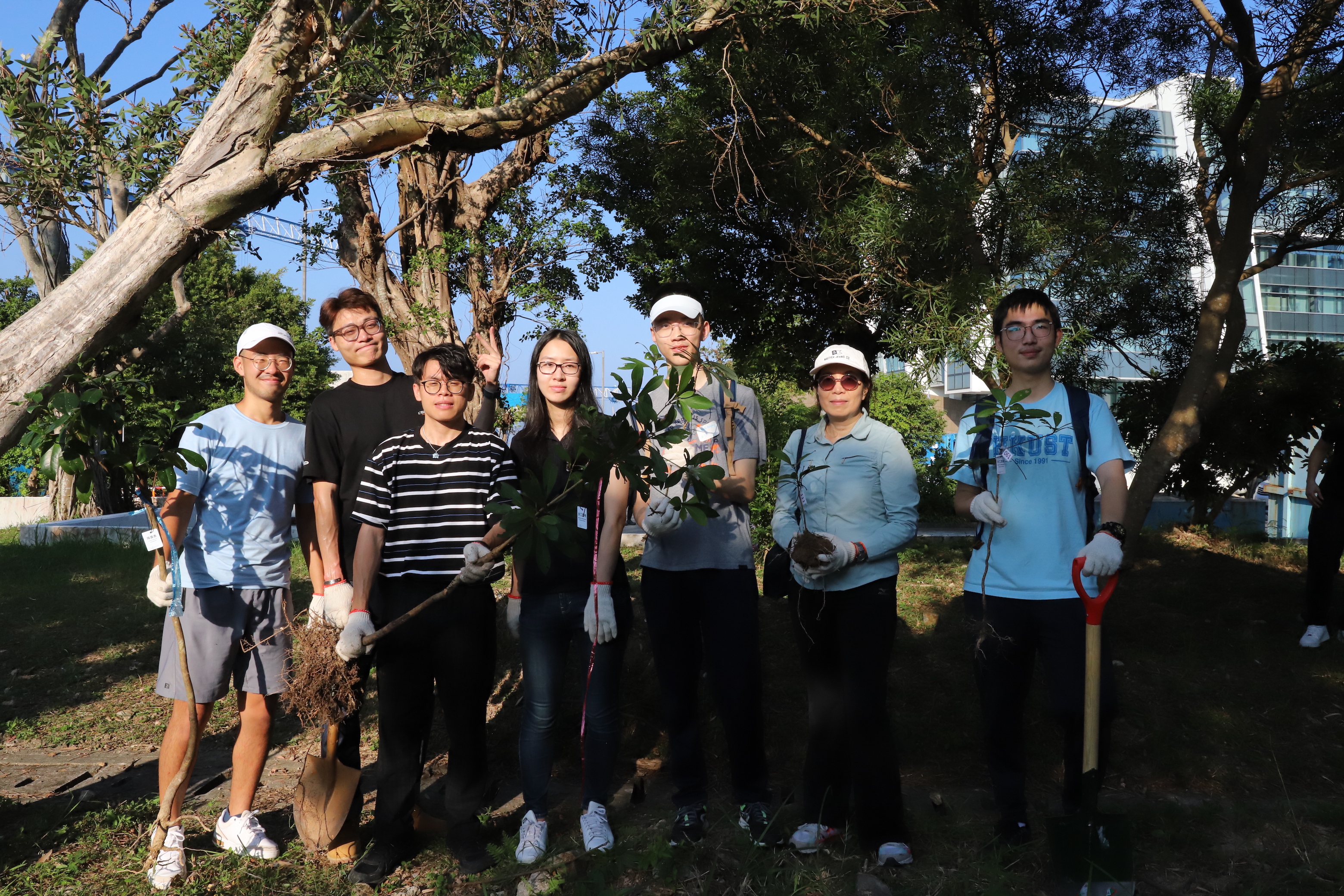
The Hong Kong University of Science and Technology (HKUST) delivers a comprehensive and integrated educational programme on ecosystems looking at flora and fauna for local or national communities, providing education for SDGs in the wider community, including the alumni and local community.
- HKUSTour: Themed on nature and biodiversity, the HKUSTours offers the local community and alumni a glimpse of natural resources, including its flora and fauna which is related to SDG15, and fascinating stories at the HKUST Clearwater Bay campus, as well as the University's measures to foster sustainable development. Participants may have the chance to learn more about HKUST's Ocean Research Facility, Shaw Auditorium, and plant nursery. More details can be seen here.
- Ecosystems Education by HKUST Students: Biological Science and Ocean Science programs are available for HKUST students to select, educating the students with basic understanding of major principles, concepts and technologies of organismal and systems biology, including animal, plant, evolutionary and environmental biology. With courses like A Practicum on Wetland Conservation, HKUST students offered educational programs for the broader community in Hong Kong to learn more about the ecosystems related to wild flora and fauna, such as guiding tours in the Hong Kong Wetland Park for the public to join.
-
HKUST Alumni Reunion Tree Planting Activity: In a display of reunion and environmental stewardship and to promote conservation and sustainable utilisation of the land, including forests and wild land, the Sustainability/Net-Zero Office organized a tree planting event along with HKUST Alumni on 13 January. With 20 alumni participating with their families, the event marked a special day in promoting sustainability and conservation efforts within and outside the university community, and educating them the importance of SDG15. More details can be seen here.
- Biodiversity Map: The HKUST Biodiversity map is a collaborative project to develop an interactive map showcasing the unique biodiversity on our campus. It aims to appreciate and maintain the existing ecosystem, highlighting the importance of biodiversity for sustainable development. Students can enhance their understanding of local biodiversity and conservation through active learning and knowledge sharing. The project was completed in Spring 2022 and utilized in classes starting in Sept 2022.
-
Image

- Requirement for Caterers: Catering policy in the Sustainable Catering Policy (refer to Page 1 of the policy document), HKUST requires caterers to develop a sustainable food practices plan. This plan should outline their strategy, specific steps, and commitments to reducing environmental impacts and operating in a sustainable manner.
- Organic Gardening Practices on Campus: Additionally, on-campus farms and gardens are expected to adhere to sustainable farming principles, which include the use of organic practices (refer to Page 1 of the policy document).
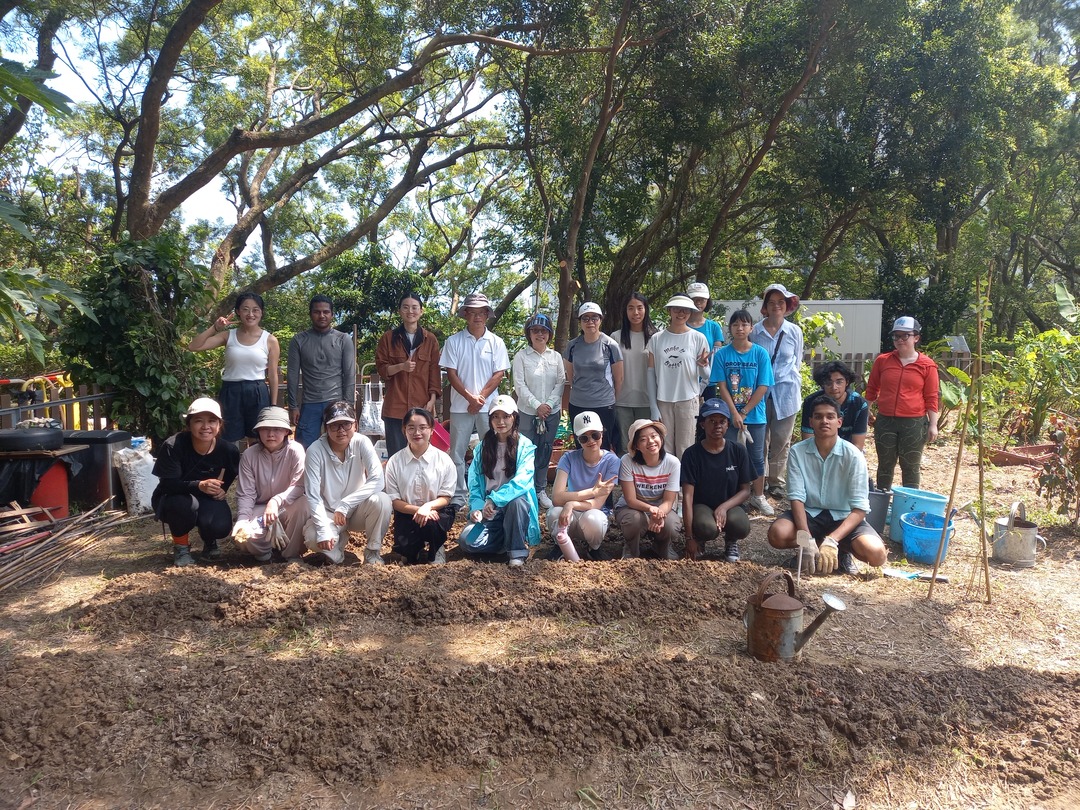
The Hong Kong University of Science and Technology (HKUST) delivers a comprehensive and integrated educational programme on the sustainable use of land for agriculture and tourism.
- Sustainable Smart Campus as a Living Lab (SSC) Tours: The SSC has funded a number of research projects related to the sustainable use of land for agriculture. Such as "Aquaponics in HKUST" and "A Sustainable Movable Vertical Garden" which showcased how to reduce the demand for land and water in agriculture and promote a new model of mobile food production, thereby promoting sustainable land management for agriculture.These on-site projects provided opportunities for the local community to learn about the sustainable use of land for agriculture by joining tours to visit the project visits and hear sharings from the project leaders. 30 visits have been hosted from June 2024 to August 2025, details of some of the visits can be seen here.
- Community Service on Sustainable Tourism & Agriculture: Through different outreach opportunities like Rock Cleaning Angel, Volunteering @ Fung Yuen Butterfly Reserve, Hike Without Trace, and Exploration in Butterfly Reserve HKUST community members helped with sustainable management of the land for tourism by cleaning the trash, cleaning up graffiti in the country park area of Hong Kong; as well as cleaning up a butterfly reserve.
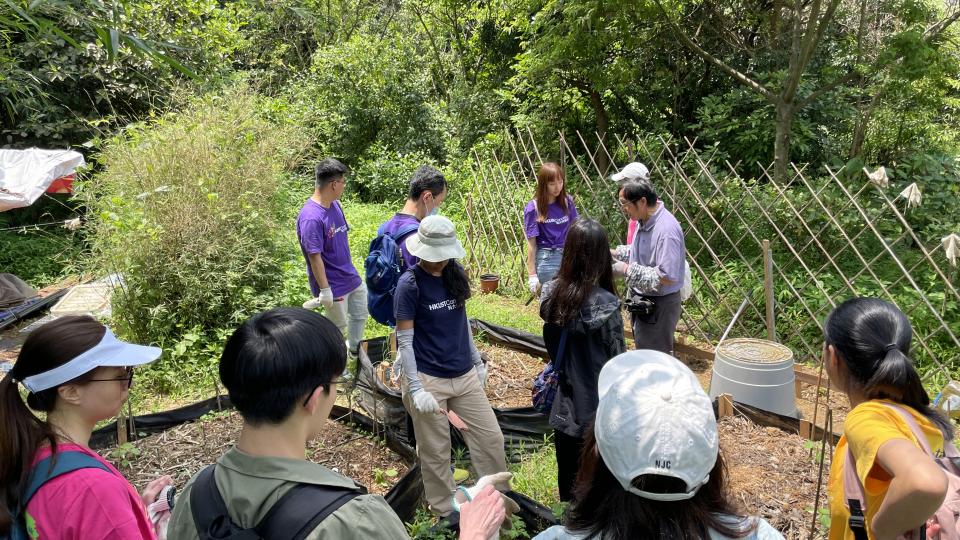
- Landscape Waste Reuse: The University has been actively exploring and implementing sustainable landscaping practices to reduce its demand on exploiting natural resources to maintain its green assets. Effort including the use of woodchips and shredded leaves to retain moisture for the soil to reduce irrigation demand; and using organic fertilizer instead of chemical fertilizer to reduce the University environmental footprint.
- Constructing a Butterfly Garden: The You Will See a Birdwing project aims to attract more butterflies to stay and live in HKUST by planting more host/larval food plants of butterflies and nectareous plants. The simplest and effective solution to fulfil the above purposes is to build a Butterfly Garden. Through this project, the University can enrich the biodiversity in campus and provide a habitat to act conserve the ecological value on campus to compensate the one loss in development.
- Green AI Camera for Bird Detection and Identification: The You Will See a Hoopoe project aims to use the AI camera aims at increasing the community’s awareness of bird protection and the sense of belonging to HKUST in a smart way, without potentially compromising privacy. Through the project, the University can enhance the understanding of the students on campus’s biodiversity.
